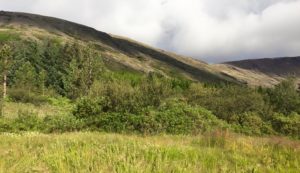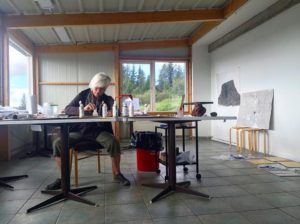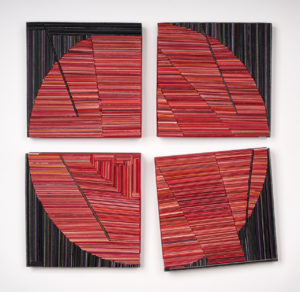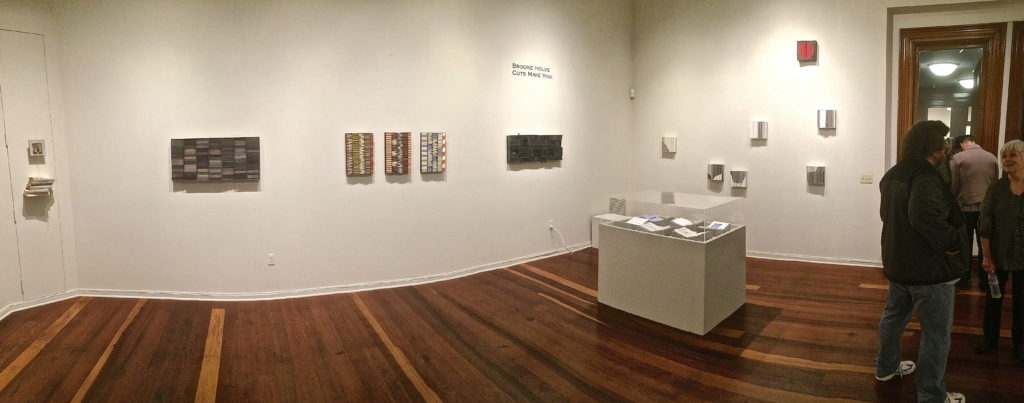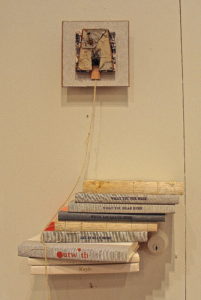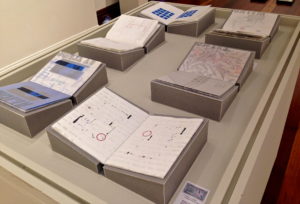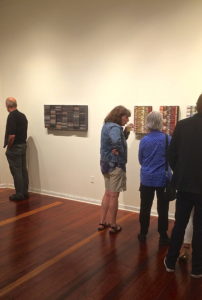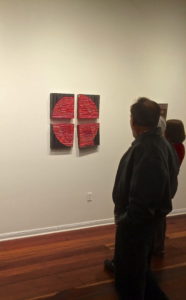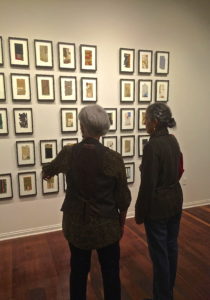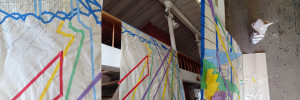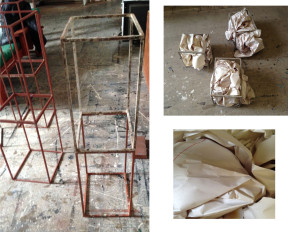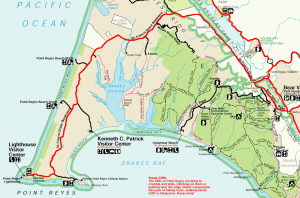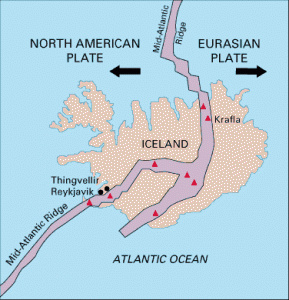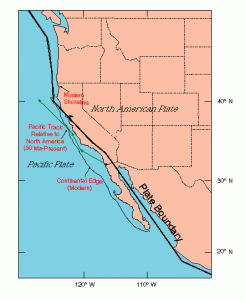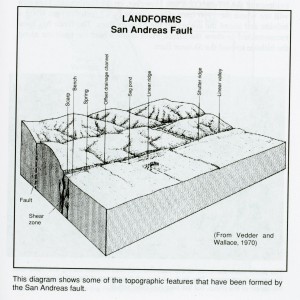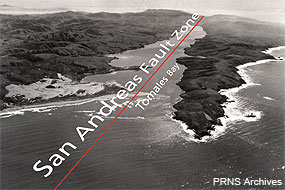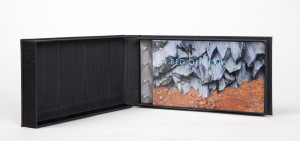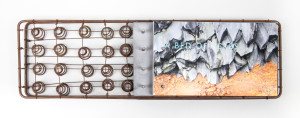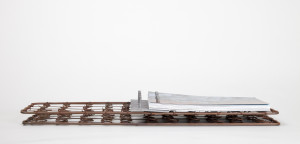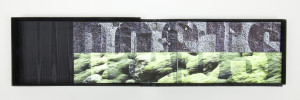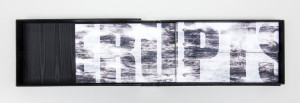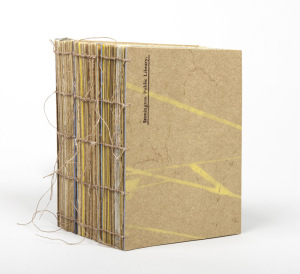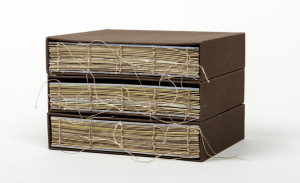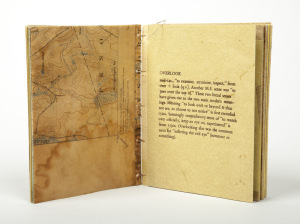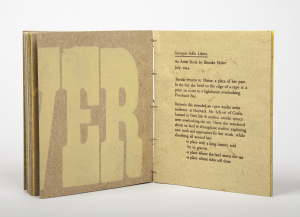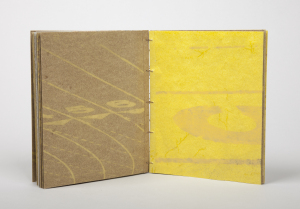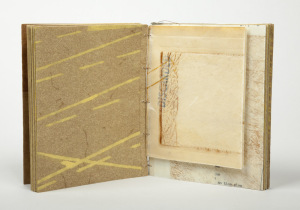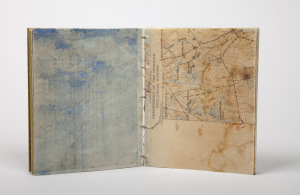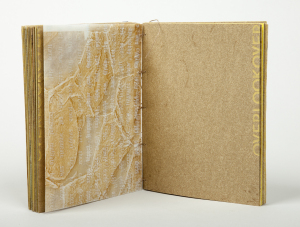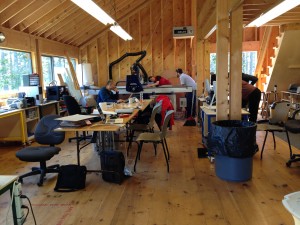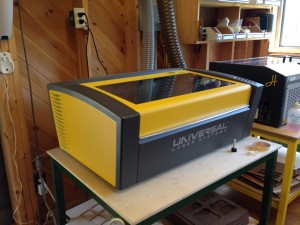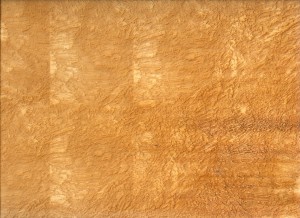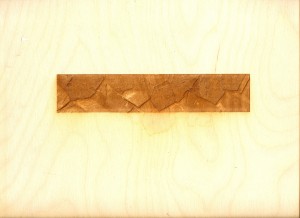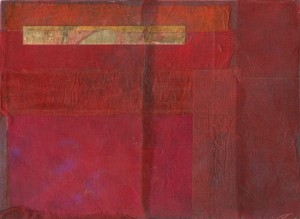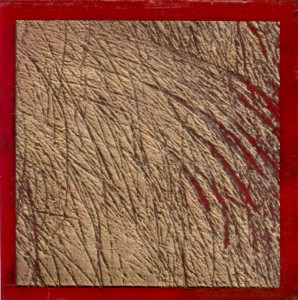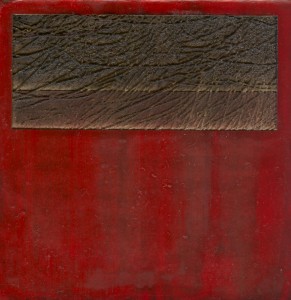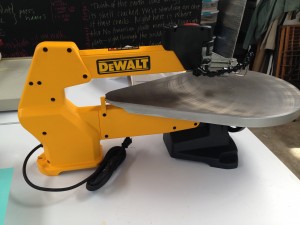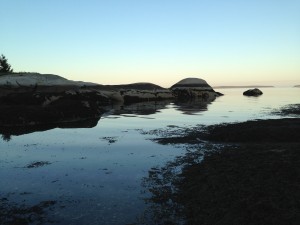There is an Icelandic saying "fall er fararheill" which means if something bad happens at the beginning of the trip, the rest will be great. This was our experience setting out for our unexpected adventure to the Westfjords. The rented SUV tire exploded minutes up the road from Gullkistan in Laugarvatn (where the residency is).
Back to Iceland 2016
Iceland again!?! The first time I visited, I was struck by the rawness of Iceland's land—a landscape of elemental forces (frumkraftur) in shape of volcanoes, geysers, glaciers, rivers, waterfalls, ice and wind, continually unmaking and making itself. It's relatively pristine and unspoiled still (in spite of the recent surge of tourism) and offers a great abundance of solitude where one can see and feel without. It's a place where I can get in touch with essence, washing away the distractions of white noise and visual disruptions: nothing is screaming for my attention—only empty spaces of blues.
Rebecca Solnit in her book, The Faraway Nearby, wrote that "These are the forces that will flourish no matter what goes extinct, where the poisons migrate, and how the weather changes. The sun will rise, the winds will blow, the waves will lick the shore, the earth will tilt on its axis so that there is more light in summer, less in winter, rains and snows will fall, if not as they used to, and the waters will turn to solid ice and melt again. This is the world that existed before life and will exist after us."
Beginnings and ends: to get a sense of what was and what is to come. This is the place to feel that whatever it is—is not readily at hand but is there nonetheless.
So I've returned to Gullkistan for another residency in Iceland to explore and develop thoughts and ideas inspired on earlier trips.
Some of those ideas & hopes:
*A trip to Vestmannaeyjar islands, formed by volcanoes 11,000 years ago except for Surtsey, the newest addition in 1963. Want to see a beginning. Heimaey is the only inhabited island. Its little town and shelter island lies between klettur (escarpments) and two ominous volcanoes, Eldfell and Helgafell. I continue to follow the winds of 'Eld'.
*A trip to Landmannalaugar, the largest geothermal field in Iceland. Its weird peaks are made of rhyolite, a mineral-filled lava that cooled unusually slowly, causing amazing colors.
*To revisit the land and stories of the beserkers on the Snaefellness Peninsula and relate to images of kami-kazi pilots of WWII and arctic terns.
*To search for evidence of driftage rights on beach shores (all the benefits of the ocean).
*To spot and photograph vardans, directional markers while traveling, walking, finding and sensing way.
*A navigational practice of the Vikings using icelandic spar (for sunstones). Some associations to consider: optics, light, refraction
*North American tectonic plate; relationship of Ca to Iceland on opposite sides (here(t)here)
*Collect basalt images.
I couldn't help myself!
Cuts Make You. at the Morris Graves Museum
An eventful reception last weekend at the Morris Graves Art Museum in Eureka. Following are a few views from the evening. The exhibit will be up through July 3, 2016.
My statement read:
"Artist, Brooke Holve contemplates the poetics of seeing in Cuts Make You., an exhibition of mixed media constructions, installations and an artist book. Her work reflects an exploration of 'cutting' as process and form as she cuts to see and cuts to make. She is interested in how to apply process to a material and arrive to a form that refers back to its making. The work is informed by the changing role of the book as the world moves to primarily digital delivery systems. Discarded book remnants are the dominant material of this work."
here(t)here continued:
Beginnings: In Cuts Make You, I introduced prime numbers as a way to structure the series. With the wide open schedule of the residency here at the Lucid Art Foundation, I applied this way to structure a working routine. The vastness of 21 free days in the wilderness of Gordon Onslow Ford land was daunting. (Above: Gordon Onslow Ford, Present in Company, 1969. Acrylic/Linen, 93 x 140 inches)
So, when in doubt, resort to the prime. A schedule enveloped:
Oct 20: day 1 Catch Oct 21: day 2 Catch Oct 22: day 3 Catch Oct 23: day 4 Construct Oct 24: day 5 Catch Oct 25: day 6 Construct Oct 26: day 7 Catch Oct 27: day 8 Construct Oct 28: day 9 Construct Oct 29: day 10 Construct Oct 30: day 11 Catch Oct 31: day 12 Construct Nov 1: day 13 Catch Nov 2: day 14 Construct Nov 3: day 15 Construct Nov 4: day 16 Construct Nov 5: day 17 Catch Nov 6: day 18 Construct Nov 7: day 19 Catch Nov 8: day 20 Construct Nov 9: day 21 Construct November tenth: departure and return home
And an envelope to be ripped? And it was!
An exploration of this place as opposed to that place; seeking a particular type of relationship to it that connects to the other. I returned from Iceland with many impressions and thoughts about the place. What happens to these thoughts in a place close to home?
So these are some of the things that happened: At the residency, I disrupted existing conventional forms to find new shapes using natural & temporal elements.
1970s Vintage Development Maps of Pt. Reyes Peninsula: Acquired from Eleanor Murray's collection, I brought them to Inverness to reference the location of the residency. Not knowing what I would do with them, I first made rough cuts (and secondary cuts) into each to approximate the shape and sections of the studio. Then I established a visual line on the walls using masking tape. Waited. Thoughts about tectonic plates and the fault lines of Iceland and Pt. Reyes directed me. Breaking up the conventional forms of the maps became a side project during the residency while I worked on constructions using book parts and wondering how this exercise will influence my constructions. I will take the maps home to continue this process and see what happens.
Light Studies: Explored forms using changing light with pen and masking tape.
When Plans are Disrupted:
Constructions:
here(t)here: another residency
Since May, I've been away from my blog. Back this month to report to you some of my summer and fall activities.
I'm off to Inverness (on Pt. Reyes peninsula in CA) later this month for another artist residency, this one sponsored by the Lucid Art Foundation. And this time, intentionally close to home, for three weeks, solo without cell coverage and social media. So no reports during my time away but should have something to share upon my return. Lots of prepping, finding that I will take more than I take to residencies afar and certainly a way to complicate an experience.
When I have traveled to residencies somewhere else, I am often surprised by what I learn about my home. Three years ago in Iceland, I was awed by its raw landscape that had been shaped by volcanoes, glaciers, weather and its location in the Northern Atlantic. There I realized its connection to California--both lands edging the North American tectonic plate with Iceland on one end and California on the other. I wanted devoted time to experience my own landscape with this in mind. Inverness, though not situated on the North American plate shares the San Andreas fault which separates the No American from the Pacific. And like Iceland, its land has been shaped by invisible forces of the earth. At Inverness, I want to further explore this connection.
I am also interested in exploring place--what it holds and what I carry to it. When I applied for this residency, I wrote, "Using Inverness as a springboard, I will source possibilities for methods and materials from its history, stories and landscape. I will look at the archival remains--rocks and stones that hold the memory of the geologic forces that shaped the physical terrain. I will walk the terrain, feel its relief and make contour lines as I move through space. I will look at the scratches and markings of the rocks as well as their shapes. I also will be on alert to ways of letting nature and synchronicity enter into my process. These will be my entry points to a 'process conscious' project working with themes of the archival and ephemeral."
"Language, materials and natural energies of and from the place will inform my process. Like the rocks and stones that reflect frozen moments in a changing landscape over time, I will work towards shaping moments and find ways and forms that express the movements 'between'. "
"A Bed of Verbs" debuts at Codex V
'Bed' is a charged word; its root, bhedh, means to dig.
A Bed of Verbs, 2014. A collaboration with artist, Elizabeth Sher. To be shown for its first time at Codex V at the Craneway Pavillion in Richmond, February 8th - 12th.
A Bed of Verbs, 2014. Artist Book with Clamshell: digital prints on Moab Entrada 190 and metal coated papers. 5.25 x 9.75 x 1 inches (closed clamshell box)
I travelled to Iceland with artist, Elizabeth Sher for an artist residency during the summer of 2012. We were awed by what we saw; the geologic wonders and phantasmal forms gave us a glimpse of what the earth might have been like in its beginnings. Iceland was a "land of the verb" with underground rumblings randomly spewing out steam, lava and rocks through pockets in the earth.
A land of forces not seen with verbs to describe it: bhedh, burns, chills, churns, coils, cracks, crusts, cuts, erupts, oozes, pads, posts, roots, scalds, scrape, spews, sprays, steams
Haystack 'overlooked': Stonington Public Library.
Stonington Public Library.
As a way to process and document my experience at Haystack last summer, I made 3 artist books which I hoped might capture a bit of my time there, the surrounding place as well as experiences in the studio. The books are a collection of 'sorts'. They are made from materials that I gathered: book pages from the Deer Isle dump, others from my CA. studio; old Maine maps purchased from Karna's shop in Belfast, ME; stone images, laser cut and printed onto wood veneer and book pages; milk paint, encaustic wax and coffee sticks from the Haystack dining hall.
Upon reviewing the colophon that I had written, I realized that I had repeated the word, "overlooking" several times. The word suggested to me that I rethink what I was making. My direction shifted and the word, "overlook" became a focus.
These books are a beginning of an exploration of form with the word, "overlook" as a focus.
New Tools from Haystack
More than a month ago, I returned from the open studio residency at Haystack in Maine; two weeks of uninterrupted time in three studios: graphics, wood and a digital fabrications facility. I came home renewed and excited about prospects for new work. I went to continue further explorations with 'cutting' using new tools in the fab lab. Haystack established it in 2011 and was the result of a collaboration with MIT. It includes a CNC router, laser cutter, 3D printer, milling machines, sign center and computer terminals, and was staffed by two tech assistants from MIT. I spent much time there experimenting primarily with the laser cutter.
There are two different cutting techniques one can employ with the laser cutter: vector and raster. Vector is more adept at cutting shapes out or into a material; raster tends to be used for engraving and making relief cuts. I tried both and found that I preferred the raster images. Some experimenting below:
My goal was to make work that looked like it was not done with a machine. Image selection and treatment of materials contributed to the look. More examples below:
I also spent some time in the wood working studio. While there I observed one of the participants working with stacks of wood and realized that I could use a similar approach with book covers. Her primary tool was a scroll saw. I came home and purchased one!
Other highlights:
Open Studio Residency at Haystack
Recently I applied and was accepted to Haystack's Open Studio Residency. Haystack Mountain School of Crafts is an international craft school located on the Atlantic Ocean in Deer Isle, Maine. The school offers intensive studio-based workshops in a variety of craft media. The Open Studio Residency, now in its second year, provides two weeks of uninterrupted time to work in six studios (ceramics, fiber, graphics, iron, jewelry, and wood) to develop ideas and experiment in various media. The program accommodates approximately fifty participants from a variety of creative disciplines. Participants can choose to work in one particular studio or move among studios depending on the nature of their work. All of the studios will be staffed by technicians who can assist with projects. Haystack's fab lab will also be open, providing an opportunity for experimentation with digital fabrication as a way to augment and complement creative practices. This new artist studio, established in 2011 in collaboration with MIT Center for Bits and Atoms, offers another way of looking at craft in a broader context. I will travel to Maine for the residency that runs from May 25th through June 6th. While there I intend to continue my exploration of "cutting" as theme and process as it relates to material and form. I intend to rotate among studios, observing and collecting sensory data from each of the crafts. My question is how I can translate this data into new ways of seeing, using the new media in the fab lab. I don't pretend to know the possibilities but am curious to explore other ways of finding forms that are referential to its making.

